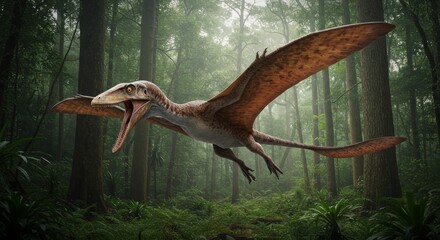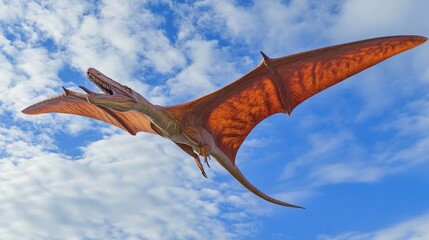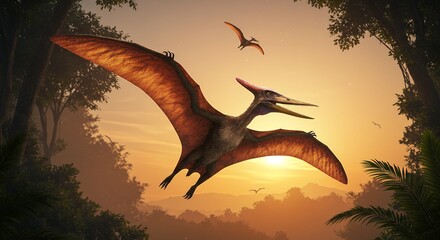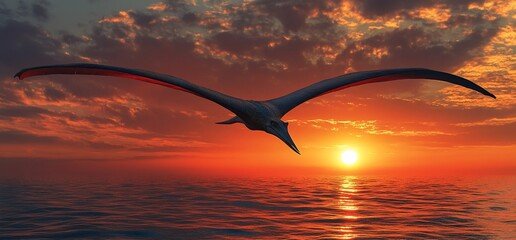The term teridactly pterodactyl might sound confusing at first, but let’s clear it up step by step. Pterodactyls belong to a group of flying reptiles called pterosaurs, which lived millions of years ago. While the name is often used casually, the correct term is Pterodactylus, a genus of small to medium-sized pterosaurs. What this really means is, teridactly pterodactyl refers to these ancient flying creatures that were some of the first vertebrates to take to the air. Their wings were made of skin stretched over elongated finger bones, enabling flight long before birds existed.
What is a Teridactly Pterodactyl?
To start, teridactly pterodactyl is a way some people refer to the pterodactyl, though the proper spelling is “pterodactyl.” These animals are part of a larger group called pterosaurs, which lived during the late Jurassic period. They had lightweight bones and wings made of membranes, similar to bats but much bigger in some species. What this really means is, they were perfectly adapted for flying in prehistoric skies, hunting fish and small animals.
How Did Teridactly Pterodactyls Fly?
Flying was key to the survival of teridactly pterodactyls. Their wings, made from a thin skin membrane, stretched across an elongated fourth finger. Their hollow bones made them light, helping them glide through the air with ease. They used their strong muscles and wing shape to launch themselves and soar for long distances. This flying ability gave them an advantage over many land animals, allowing them to hunt from the air and avoid predators.
The Size and Shape of Teridactly Pterodactyls
Not all teridactly pterodactyls were the same size. Some were as small as a seagull, while others had wingspans up to 10 feet or more. Their heads had long, pointed beaks with sharp teeth, perfect for catching fish and small prey. Their bodies were covered with a thin layer of fur-like structures, possibly to keep warm. This variety in size and shape helped them live in different environments and find different kinds of food.
Where Did Teridactly Pterodactyls Live?
Teridactly pterodactyls lived in many parts of the world, mostly near water like lakes, rivers, and coastlines. These places provided plenty of food like fish and small animals. Fossils have been found in Europe, Asia, and North America. Their habitats were warm and had plenty of open space for flying. This wide distribution shows they were successful creatures during their time.

What Did Teridactly Pterodactyls Eat?
Their diet mainly included fish and small animals. Their sharp teeth and long beaks helped them catch slippery fish from lakes and seas. They may have also eaten insects and small land creatures when fish were scarce. Their hunting skills were supported by sharp eyesight and quick reflexes. This diet kept them strong and active in their environments.
How Do We Know About Teridactly Pterodactyls?
Scientists study fossils to understand teridactly pterodactyls. Fossil bones, wings, and sometimes impressions of their skin show us how they looked and moved. These fossils tell us about their size, shape, and flying abilities. By comparing fossils from different places and times, scientists learn how these creatures lived and evolved. This knowledge helps us connect the past with today’s animals.
Differences Between Teridactly Pterodactyls and Dinosaurs
Although teridactly pterodactyls lived at the same time as dinosaurs, they are not dinosaurs. The main difference is that pterodactyls could fly, while most dinosaurs lived on land. Also, their bone structures are different. Pterodactyls belong to the group of reptiles called pterosaurs. This distinction is important to understand prehistoric life and how these animals fit in the ecosystem.
How Did Teridactly Pterodactyls Reproduce?
Teridactly pterodactyls laid eggs, much like birds and reptiles today. Fossil evidence shows nests and eggshells, giving clues about their breeding habits. They likely cared for their young until they could fly and hunt on their own. This parental care increased the chances of their survival in a dangerous world full of predators.
What Happened to Teridactly Pterodactyls?
Teridactly pterodactyls, along with many other species, disappeared about 66 million years ago during a mass extinction event. This event is believed to have been caused by a giant asteroid impact, which changed the climate drastically. Their extinction allowed birds and mammals to rise and fill many ecological roles once held by pterosaurs.
Why Are Teridactly Pterodactyls Important?
These creatures help scientists understand evolution and the history of life on Earth. Their ability to fly showed early vertebrate innovation and adaptation. Studying them also teaches us about ancient ecosystems and how animals interact with their environment. This knowledge is crucial for biology, paleontology, and understanding our own world.
How Are Teridactly Pterodactyls Represented in Popular Culture?
Teridactly pterodactyls appear often in movies, books, and museums. People are fascinated by their strange look and flying ability. Though sometimes shown incorrectly, these representations help keep interest in prehistoric life alive. They also inspire curiosity about science and history among people of all ages.
The Evolution of Teridactly Pterodactyls
Pterosaurs evolved from earlier reptiles, gradually developing wings and flight abilities. Over millions of years, they adapted to various environments, changing in size and shape. This evolution is a story of survival, showing how animals can change to fit new challenges. Understanding this helps us see the big picture of life on Earth.

Comparing Teridactly Pterodactyls and Modern Birds
Although both can fly, teridactly pterodactyls and modern birds are not closely related. Birds evolved from small dinosaurs, while pterosaurs had a separate evolutionary path. Their wing structures are different; birds have feathers, while pterosaurs had skin wings. This difference shows the variety of ways nature solves similar problems.
How Scientists Study Teridactly Pterodactyls Today
Modern tools like CT scans and 3D modeling let scientists study fossils in new ways. These technologies reveal details hidden inside bones and show how muscles and wings worked. Such studies give more accurate pictures of how teridactly pterodactyls lived and flew. They also help create better museum displays and educational materials.
Interesting Facts About Teridactly Pterodactyls
One cool fact is that some teridactly pterodactyls could fly at high speeds and soar for hours. Another is that their wings had a claw on the first finger, which helped them climb or grab objects. They were also among the first animals to have fur-like structures, which might have helped with temperature control. These facts highlight their uniqueness.
What Can Teridactly Pterodactyls Teach Us About Nature?
They show how life finds ways to adapt and survive. Their flying ability developed independently from birds, showing different evolutionary paths. Studying them encourages us to look at nature with curiosity and respect. This understanding can inspire better conservation of modern animals and their habitats.
Fossil Discoveries and Teridactly Pterodactyls
New fossils of teridactly pterodactyls continue to be found, sometimes with soft tissue impressions. Each discovery fills gaps in our knowledge and sometimes changes what we thought was true. These ongoing findings remind us that science is always evolving and that the past still holds many secrets.
Teridactly Pterodactyls in Education
Schools and museums use teridactly pterodactyls to teach about evolution, anatomy, and prehistoric life. They are a great way to get students interested in science. Hands-on activities, fossils, and models make learning fun and memorable. This helps build the next generation of scientists and curious minds.

Myths and Misconceptions About Teridactly Pterodactyls
Many myths exist, like calling them dinosaurs or imagining they were giant dragons. While these stories are fun, they often confuse facts. Clearing up misconceptions is important to understand real science. Teaching the difference helps people appreciate these animals for what they truly were.
Conclusion
Teridactly pterodactyls connect us to Earth’s deep past and show the wonders of evolution. They remind us that life is always changing and adapting. Learning about them helps us understand the natural world and our place in it. That’s why these ancient flyers will always be fascinating and important.
Read also: Goformitive Explained Features, Benefits, and Teaching Tips















